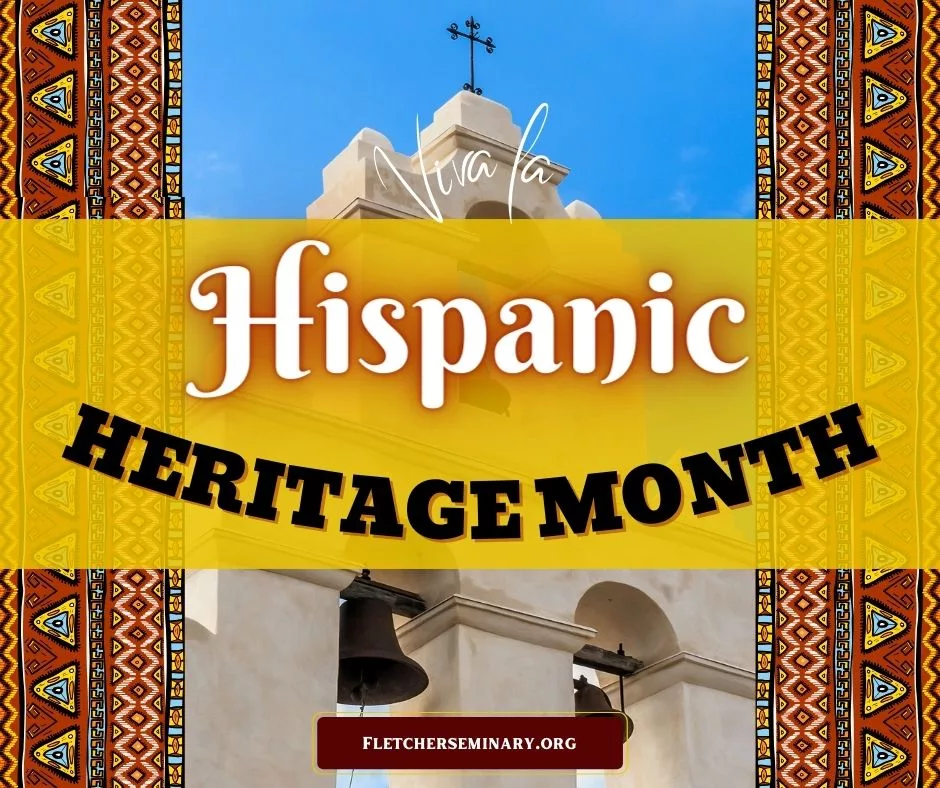(San Antonio, TX) As the vibrant city of San Antonio, Texas, embraces the colorful and rich tapestry of Hispanic culture, Fletcher Seminary joins in the festivities to celebrate Hispanic Heritage Month. This month-long celebration, which runs from September 15th to October 15th, provides an excellent opportunity for us to honor the contributions, culture, and heritage of our Hispanic community. In this blog article, we will explore the significance of Hispanic Heritage Month and how Fletcher Seminary embraces this celebration in the heart of San Antonio.
Saint Anthony of Padua
San Antonio is named for the Catholic saint, Anthony (San Antonio) of Padua. Born in Portugal in 1195, he joined the Franciscan order and became a celebrated teacher of scripture. Anthony was declared a saint in 1232, less than a year after his death in Padua, Italy. When the first European explorers arrived here on St. Anthony’s feast day, June 13, 1691, they renamed the existing Indian village of Yanaguana in his honor.
His name was given to the area’s largest river in 1709 and to the first of five Spanish missions in the area, San Antonio de Valero (known today as the Alamo). It was founded in 1718. By the 1800s the missionary-led communities along the river and nearby military and civilian settlements had merged into one town known simply as San Antonio. Today various local institutions bear St. Anthony’s name, and his likeness is depicted in statuary throughout the community.
Hispanic Heritage Month
Hispanic Heritage Month, also known as “Mes de la Herencia Hispana” in Spanish, has its roots in the United States dating back to 1968 when it was initially established as Hispanic Heritage Week. It was later expanded to a month-long celebration in 1988, encompassing the independence days of several Latin American countries, including Mexico, Chile, Costa Rica, El Salvador, Guatemala, Honduras, and Nicaragua.
This month-long observance serves as a time to recognize and celebrate the diverse cultures, traditions, and contributions of Hispanic and Latino Americans who have left an indelible mark on the nation’s history, society, and culture. It’s a time to showcase the profound impact of Hispanic individuals and communities in various fields, including arts, music, politics, science, and religion.
Fletcher Seminary’s Commitment to Diversity
Fletcher Seminary, nestled in the heart of San Antonio, is committed to fostering a diverse and inclusive community. We believe that by embracing and celebrating the rich Hispanic heritage that surrounds us, we not only honor the past but also build a stronger, more united future.
Fletcher Seminary is working every day to build relationships with Hispanic pastors and churches, including building partnerships with those serving migrant communities in the Texas valley. “Over 300 years ago, Spain staked its claim in the New World and sent missionaries to colonize the native peoples. Then, it was a Coahuiltecan Indian village. Today, it is San Antonio. The early Spanish settlements in Texas, including San Antonio, were a series of missions and military outposts (presidios). They founded Mission San Antonio de Valero (Alamo) and a presidio to protect it at the headwaters of the San Antonio River in 1718, followed by four other missions.”
The missions around San Antonio are a UNESCO World Heritage Site (the only one in Texas) and people come from around the world to learn about the influence of early Christian settlements and communities.
Happy Hispanic Heritage Month from Fletcher Seminary!

